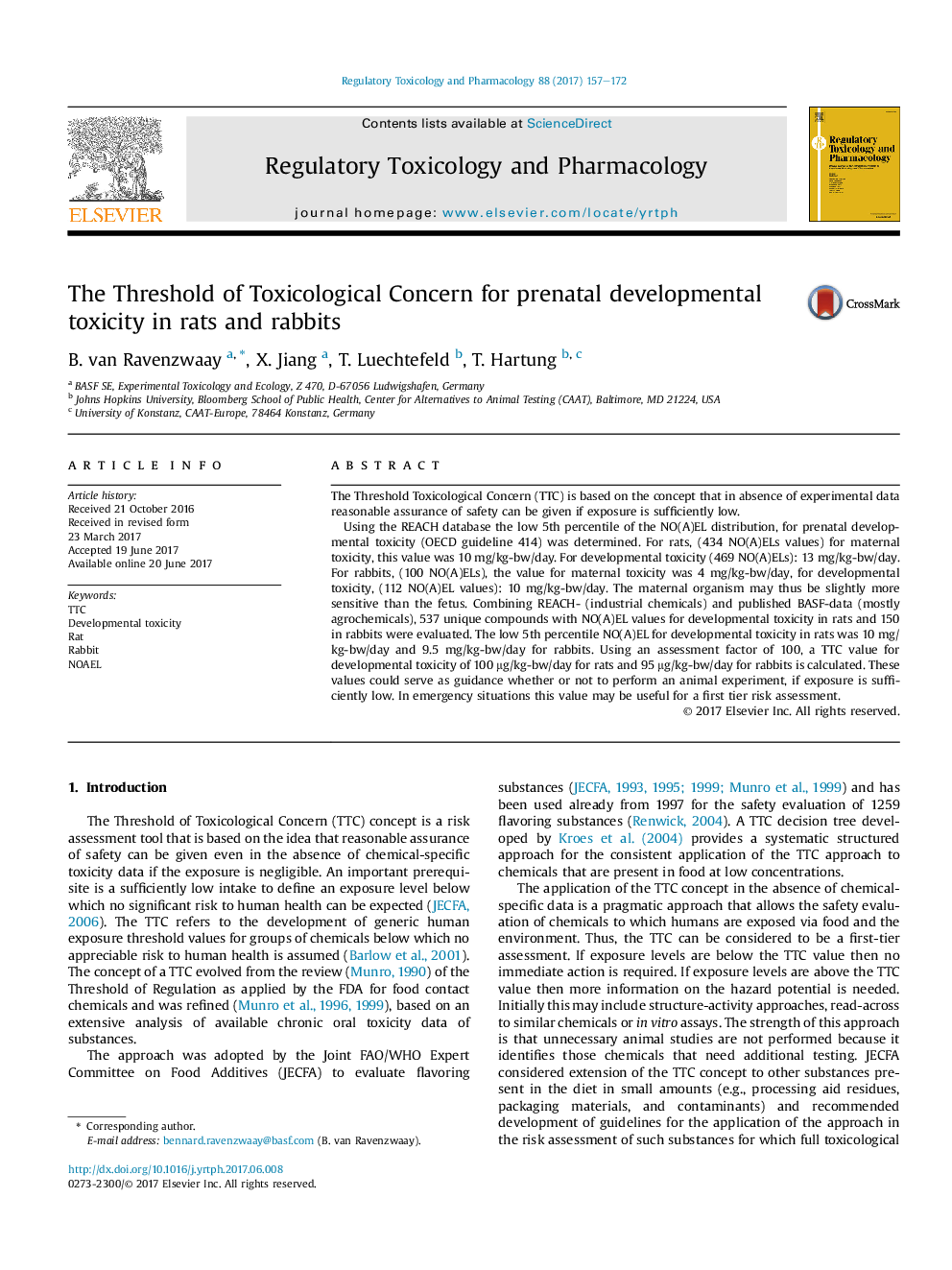| Article ID | Journal | Published Year | Pages | File Type |
|---|---|---|---|---|
| 5561154 | Regulatory Toxicology and Pharmacology | 2017 | 16 Pages |
â¢Developmental toxicity TTC values for rats and rabbits.â¢Evaluation for industrial chemicals (REACH database) and pesticides.â¢Rats and rabbits equally sensitive; proposed TTC ca. 100 μg/kg bw/d.â¢Distribution curves for maternal and developmental toxicity generally similar.
The Threshold Toxicological Concern (TTC) is based on the concept that in absence of experimental data reasonable assurance of safety can be given if exposure is sufficiently low.Using the REACH database the low 5th percentile of the NO(A)EL distribution, for prenatal developmental toxicity (OECD guideline 414) was determined. For rats, (434 NO(A)ELs values) for maternal toxicity, this value was 10 mg/kg-bw/day. For developmental toxicity (469 NO(A)ELs): 13 mg/kg-bw/day. For rabbits, (100 NO(A)ELs), the value for maternal toxicity was 4 mg/kg-bw/day, for developmental toxicity, (112 NO(A)EL values): 10 mg/kg-bw/day. The maternal organism may thus be slightly more sensitive than the fetus. Combining REACH- (industrial chemicals) and published BASF-data (mostly agrochemicals), 537 unique compounds with NO(A)EL values for developmental toxicity in rats and 150 in rabbits were evaluated. The low 5th percentile NO(A)EL for developmental toxicity in rats was 10 mg/kg-bw/day and 9.5 mg/kg-bw/day for rabbits. Using an assessment factor of 100, a TTC value for developmental toxicity of 100 μg/kg-bw/day for rats and 95 μg/kg-bw/day for rabbits is calculated. These values could serve as guidance whether or not to perform an animal experiment, if exposure is sufficiently low. In emergency situations this value may be useful for a first tier risk assessment.
